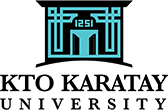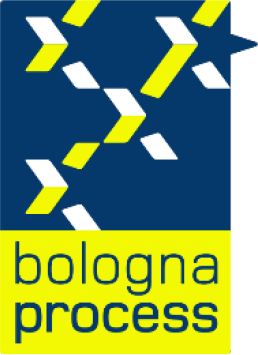Medical Imaging Techniques
Course Details

KTO KARATAY UNIVERSITY
Vocational School of Medical Services
Programme of Medical Imaging Techniques
Course Details
Vocational School of Medical Services
Programme of Medical Imaging Techniques
Course Details

| Course Code | Course Name | Year | Period | Semester | T+A+L | Credit | ECTS |
|---|---|---|---|---|---|---|---|
| 99401010 | Mathematical Methods in Physics | 1 | Autumn | 1 | 2+0+0 | 3 | 3 |
| Course Type | Elective |
| Course Cycle | Associate (Short Cycle) (TQF-HE: Level 5 / QF-EHEA: Short Cycle / EQF-LLL: Level 5) |
| Course Language | Turkish |
| Methods and Techniques | - |
| Mode of Delivery | Face to Face |
| Prerequisites | - |
| Coordinator | - |
| Instructor(s) | - |
| Instructor Assistant(s) | - |
Course Content
Vectors, Complex numbers, complex functions, integral calculations, matrices, differential equations, special functions
Objectives of the Course
To acquire basic knowledge of Physics, to use science and mathematics to define and solve physics problems.
Contribution of the Course to Field Teaching
| Basic Vocational Courses | |
| Specialization / Field Courses | |
| Support Courses | X |
| Transferable Skills Courses | |
| Humanities, Communication and Management Skills Courses |
Relationships between Course Learning Outcomes and Program Outcomes
| Relationship Levels | ||||
| Lowest | Low | Medium | High | Highest |
| 1 | 2 | 3 | 4 | 5 |
| # | Program Learning Outcomes | Level |
|---|---|---|
| P | 3 | |
| P10 | The individual has the ability to use the information he/she obtains from different disciplines in a personal way, in line with his/her interests and abilities. | 5 |
Course Learning Outcomes
| Upon the successful completion of this course, students will be able to: | |||
|---|---|---|---|
| No | Learning Outcomes | Outcome Relationship | Measurement Method ** |
| O1 | Being able to make sense of the information an individual will obtain from different disciplines in line with their interests and abilities. | P.10.1 | 1 |
| O2 | Being able to explain the information that an individual will obtain from different disciplines in line with their interests and abilities. | P.10.2 | 1 |
| O3 | The ability to use the information obtained from different disciplines in line with the individual's interests and abilities in his/her own field. | P.10.3 | 1 |
| O4 | Ability to analyze application results using information obtained from different disciplines in line with the individual's interests and abilities. | P.10.4 | 1 |
| O5 | The ability to create a new structure by combining the information obtained from different disciplines and the information in one's own field in line with the individual's interests and abilities. | P.10.5 | 1 |
| O6 | Being able to evaluate the information that an individual will obtain from different disciplines in line with their interests and abilities. | P.10.6 | 1 |
| ** Written Exam: 1, Oral Exam: 2, Homework: 3, Lab./Exam: 4, Seminar/Presentation: 5, Term Paper: 6, Application: 7 | |||
Weekly Detailed Course Contents
| Week | Topics |
|---|---|
| 1 | Vectors-I |
| 2 | Vectors-II |
| 3 | Complex Numbers |
| 4 | Complex Functions |
| 5 | Integral Calculations |
| 6 | Matrices - I |
| 7 | Matrices-II |
| 8 | Midterm |
| 9 | First Order Differential Equations |
| 10 | First Order Differential Equations |
| 11 | Second Order Differential Equations with Constant Coefficients |
| 12 | Second Order Differential Equations with Variable Coefficients |
| 13 | Introduction to Special Functions |
| 14 | Special Functions |
| 15 | Special Functions |
| 16 | Final Exam |
Textbook or Material
| Resources | M.L. Boas, Mathematical Methods in the Physical Sciences. (2ed., Wiley, 1983) |
Evaluation Method and Passing Criteria
| In-Term Studies | Quantity | Percentage |
|---|---|---|
| Attendance | - | - |
| Laboratory | - | - |
| Practice | - | - |
| Field Study | - | - |
| Course Specific Internship (If Any) | - | - |
| Homework | - | - |
| Presentation | - | - |
| Projects | - | - |
| Seminar | - | - |
| Quiz | - | - |
| Listening | - | - |
| Midterms | 1 | 40 (%) |
| Final Exam | 1 | 60 (%) |
| Total | 100 (%) | |
ECTS / Working Load Table
| Quantity | Duration | Total Work Load | |
|---|---|---|---|
| Course Week Number and Time | 14 | 2 | 28 |
| Out-of-Class Study Time (Pre-study, Library, Reinforcement) | 14 | 2 | 28 |
| Midterms | 1 | 14 | 14 |
| Quiz | 0 | 0 | 0 |
| Homework | 0 | 0 | 0 |
| Practice | 0 | 0 | 0 |
| Laboratory | 0 | 0 | 0 |
| Project | 0 | 0 | 0 |
| Workshop | 0 | 0 | 0 |
| Presentation/Seminar Preparation | 0 | 0 | 0 |
| Fieldwork | 0 | 0 | 0 |
| Final Exam | 1 | 20 | 20 |
| Other | 0 | 0 | 0 |
| Total Work Load: | 90 | ||
| Total Work Load / 30 | 3 | ||
| Course ECTS Credits: | 3 | ||
Course - Learning Outcomes Matrix
| Relationship Levels | ||||
| Lowest | Low | Medium | High | Highest |
| 1 | 2 | 3 | 4 | 5 |
| # | Learning Outcomes | P10 |
|---|---|---|
| O1 | Being able to make sense of the information an individual will obtain from different disciplines in line with their interests and abilities. | 5 |
| O2 | Being able to explain the information that an individual will obtain from different disciplines in line with their interests and abilities. | 5 |
| O3 | The ability to use the information obtained from different disciplines in line with the individual's interests and abilities in his/her own field. | 5 |
| O4 | Ability to analyze application results using information obtained from different disciplines in line with the individual's interests and abilities. | 5 |
| O5 | The ability to create a new structure by combining the information obtained from different disciplines and the information in one's own field in line with the individual's interests and abilities. | 5 |
| O6 | Being able to evaluate the information that an individual will obtain from different disciplines in line with their interests and abilities. | 5 |
